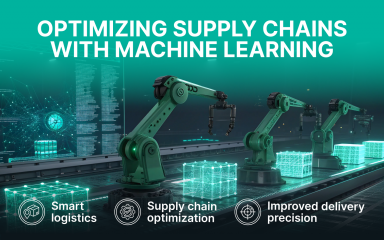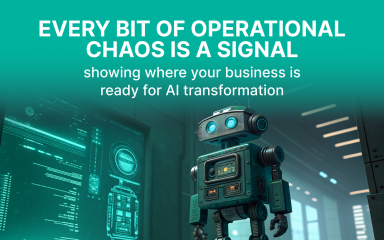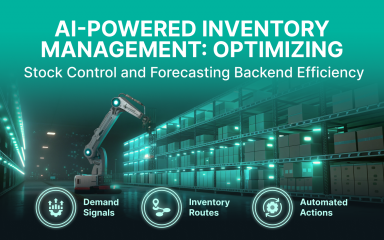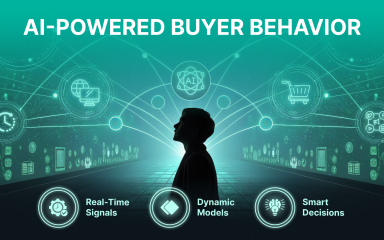AI shopping assistant technology is no longer a futuristic add-on, but is quickly becoming the backbone of modern e-commerce. Instead of static filters or guesswork recommendations, these intelligent systems use machine learning, natural language processing, and real-time customer data to create a personalized shopping experience that feels intuitive and human. This shift is reshaping the ecommerce landscape, as AI-driven solutions transform how brands and customers interact online.
And the payoff? Stores that have implemented AI shopping assistants are reporting higher conversion rates, bigger baskets, and repeat buyers who actually look forward to shopping online. The key benefits of these assistants include improved personalization, operational efficiency, and a more engaging customer journey.
Let’s break down how they work, why they matter, and how eCommerce leaders can make them part of their shopping process today. Modern AI shopping assistants offer advanced capabilities such as AI-powered quizzes, AI Search, and personalized interactions that elevate the online shopping experience.
What Is an AI Shopping Assistant?
At its core, an AI shopping assistant is a virtual shopping assistant powered by artificial intelligence. Instead of manually scrolling through endless product grids, customers get instant, personalized product recommendations that reflect their intent, style, and context.
Unlike old-school upselling or filter-based navigation, an AI-powered shopping assistant adapts in real time. It notices user behavior, such as clicks, searches, abandoned carts, and responds with smarter suggestions. Think of it as the difference between a cashier handing you a generic coupon and a skilled salesperson who remembers your preferences, guides you to the right aisle, and even gives styling tips.
In fact, AI shopping assistants work so well that personalized suggestions now generate up to 31% of eCommerce revenue, and nearly 40% of Amazon’s sales come from its recommendation engine. For smaller eCommerce companies, simply adding smart recommendations has led to a 20% lift in conversions.
The AI Shopping Assistant Framework
AI assistants aren’t only fancy widgets, but they follow a framework designed to maximize customer engagement and improve the entire online shopping experience.
Real-Time Personalization
A personalized shopping assistant uses real-time personalization for eCommerce to adapt instantly. If a shopper lingers on sneakers, the AI shifts to highlight the right sizes, colors, or accessories. These micro-adjustments reduce friction in the buying journey and can increase conversions by up to 53%.
Conversational Commerce
Thanks to conversational commerce AI, virtual assistants and AI chatbots now guide customers with human-like dialogue. From answering customer queries to managing service requests or even handling order tracking, they deliver real-time assistance that feels personal rather than robotic.
Smart Product Discovery
AI makes intelligent product discovery easy with visual search, dynamic recommendation engines, and semantic understanding of customer data. That means shoppers don’t have to know the exact product name; they just describe, or even upload a picture, and the system finds matches with relevant specifications. The system also provides comprehensive product details, including specifications, customer reviews, and key features, and enables users to compare products easily. Product comparisons play a crucial role in helping customers make informed purchasing decisions.
Integration With the Retail Ecosystem
The best shopping assistant tools don’t live in isolation. They plug into ERP, CRM, CMS, and marketing platforms to ensure consistent recommendations across every touchpoint. In the context of online retail, these integrations are transforming the industry by enhancing customer experience and streamlining operations. An AI eCommerce assistant embedded in this ecosystem ensures accurate product catalogs, smoother workflows, and cost savings from reduced manual labor.
Data-Driven Insights
Beyond recommendations, assistants feed back insights into AI-driven customer experience dashboards. Retailers see where shoppers drop off, which bundles work, and how promotions perform. These insights enable improved customer engagement by allowing for more relevant recommendations and personalized interactions that increase customer satisfaction. With automated A/B testing, brands can optimize continuously while protecting data accuracy and data privacy.
AI Shopping Assistant Implementation: From Strategy to Deployment
So, how do you go from theory to reality? Implementing an AI shopping assistant isn’t just a technical project because it’s a strategic shift that can reshape conversions, operations, and the entire customer experience. Generative AI now powers advanced conversational and recommendation features in AI shopping assistants, enabling more realistic interactions and highly personalized shopping experiences.
Pilot Launch & Testing
The smartest way to start is small. Pilot programs focusing on AI shopping assistant features, like product recommendation engines or chat-based support, help validate ROI quickly. Global data backs this up: businesses running targeted pilots see faster scaling and easier buy-in across departments. With adoption rising nearly 270% since 2019, many online retailers now treat pilots as the default entry point rather than a side experiment.
Vendor Integration
Choosing the right AI-powered shopping assistant provider is critical. Look for platforms that support both virtual shopping assistants and conversational commerce AI, and prioritize flexibility to avoid vendor lock-in. Integration challenges are real: outdated systems, siloed customer data, and privacy concerns remain the top barriers. Successful retailers overcome this by opting for cloud-native platforms and setting clear governance rules from day one.
Cloud & Infrastructure
Scaling requires reliable infrastructure, and that’s where AI powered shopping assistants shine. Running them in the cloud means automatic updates, smoother integrations, and resilience during traffic spikes. For enterprise retailers, this is also where AI in retail automation delivers outsized value, keeping workflows efficient while supporting millions of personalized shopping experiences simultaneously.
Market Growth & Adoption
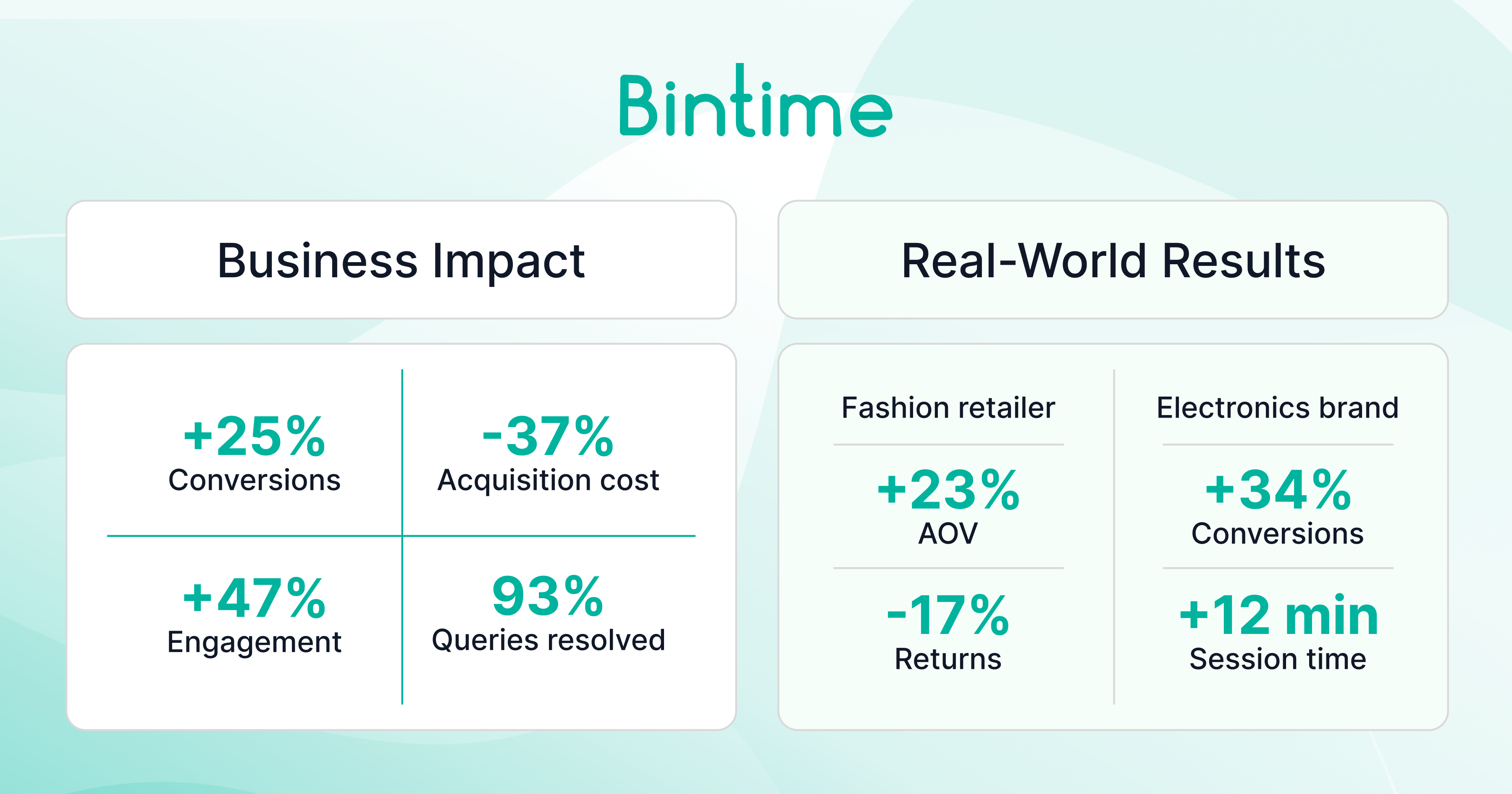
The urgency is clear. The AI shopping assistant market was valued at $4.3 billion in 2024 and is projected to reach $41.9 billion by 2034, growing at a staggering 26.1% CAGR. Another estimate puts it at $3.36B in 2024, hitting $28.54B by 2033; either way, we’re talking explosive growth. In the US, 33% of B2B eCommerce companies have already implemented assistants, while another 47% are actively evaluating them.
Strategic Impact and Effectiveness
When implemented correctly, AI assistants don’t just “work”: they move the needle:
- +25% higher conversion rates and -37% acquisition costs.
- 47% more customer engagement with product recommendations and support.
- 35% cart abandonment recovery thanks to proactive conversational nudges.
- 93% of customer queries resolved by AI agents, freeing staff for complex tasks.
Regional Trends
Adoption varies globally. North America leads revenue share thanks to mature eCommerce and advanced infrastructure, while Europe and APAC are catching up fast, driven by smartphone penetration and digital-first retail strategies.
Real-World Results
Numbers are one thing, but the real-world impact seals the case:
- A fashion retailer using AI stylists boosted average order value by 23% and cut returns by 17%.
- An electronics brand saw shoppers spend 12 minutes per session with AI tools (vs. the usual few minutes) and convert 34% more often.
Independent brands have also leveraged AI shopping assistants to compete with larger retailers, gaining greater visibility and reaching new customers in a crowded marketplace.
Implementing AI shopping assistants is no longer experimental. It’s a proven strategy for double-digit growth in conversions, stronger customer engagement, and more efficient operations. The playbook is simple: start with pilots, tackle integration and privacy challenges head-on, and refine models continuously with feedback.
AI Talent and Organizational Alignment
Even the smartest intelligent systems fail without people who know how to use them.
Building AI-Ready Teams
Recruitment and training matter. Whether hiring specialists or reskilling existing staff, every ai eCommerce assistant initiative needs teams who understand both technology and customer needs.
Cross-Functional Collaboration
AI isn’t just an IT project. Success comes when marketing, product, and support teams align on AI shopping assistant capabilities. When everyone speaks the same language, the result is engaging customer experiences that feel coherent across channels.
Leadership & Change Management
Convincing executives means proving ROI. Highlight the benefits of using AI shopping assistants: higher customer satisfaction, customer loyalty, and measurable cost savings. Leaders who embrace change foster adoption instead of resistance.
Best Practices for AI Shopping Assistant Adoption
Practical steps can make or break deployment. By following best practices for AI shopping assistant adoption, retailers can save time by streamlining processes and automating routine tasks.
Governance & Compliance
Ethical AI and privacy protections aren’t optional. Strong governance ensures that AI shopping assistant best practices comply with GDPR and protect sensitive customer data.
Vendor Partnerships
Working with experienced providers of AI-powered shopping assistants or AI eCommerce assistants accelerates deployment. They’ve solved the problems you don’t want to discover the hard way.
Continuous Optimization
AI is never “done.” Keep improving with AI-based shopping assistants that learn over time, fine-tuning AI shopping assistant features and recommendation accuracy to maximize performance.
AI Shopping Assistant Observability & Optimization
Once live, monitoring is everything.
Monitoring Performance
Track KPIs like conversion rates, average order value, and retention. AI-driven customer experience metrics can show whether your AI shopping assistant features are really moving the needle.
Feedback Loops
Feed user behavior and customer feedback back into the system. This helps create a smarter personalized shopping assistant that nails intelligent product discovery and avoids inappropriate responses or AI hallucinations.
The Role of AI Consultants in Shopping Assistant Deployment
Sometimes you need extra hands and brains.
When to Bring in Experts
External AI value strategy consultants are especially useful if your internal team lacks resources or you’re scaling fast. They bring experience with AI eCommerce assistants across industries.
How They Add Value
Experts provide ready-made frameworks and accelerate time-to-market. Their involvement showcases the benefits of using AI shopping assistants and ensures your AI-powered shopping assistant actually delivers results.
Flexible AI Shopping Assistant FAQ
What is an AI shopping assistant, and how does it work?
An AI shopping assistant is an AI-powered shopping assistant that guides customers through shopping online with personalized product recommendations and real-time support.
How can AI reduce cart abandonment?
By offering a smoother AI-driven customer experience, like instant suggestions, price comparisons, and helpful nudges, shoppers are less likely to drop off.
What’s the difference between a virtual assistant and a chatbot?
A virtual shopping assistant supports broader conversational commerce AI features, while a chatbot often handles narrower tasks like FAQs.
How do AI product recommendation engines improve performance?
A dynamic recommendation engine drives intelligent product discovery, making it faster and easier for customers to find the right products.
How do you integrate an AI-powered assistant into a store?
Most AI eCommerce assistants plug into existing platforms and start delivering personalized product recommendations within weeks.
What’s Next?
The future of AI shopping is conversational, personalized, and data-driven. Whether through virtual try-ons, augmented reality, or smarter personal shopping guidance, AI powered shopping experiences will keep reshaping how customers engage with brands.
So here’s the takeaway: investing in an AI shopping assistant isn’t just about conversions; it’s about building stronger relationships, creating engaging customer experiences, and staying relevant in the crowded e-commerce space.
Ready to see it in action? Request a personalized demo with our Partner Manager and explore how AI can guide customers, increase relevance, and boost sales while delivering smarter shopping journeys.

